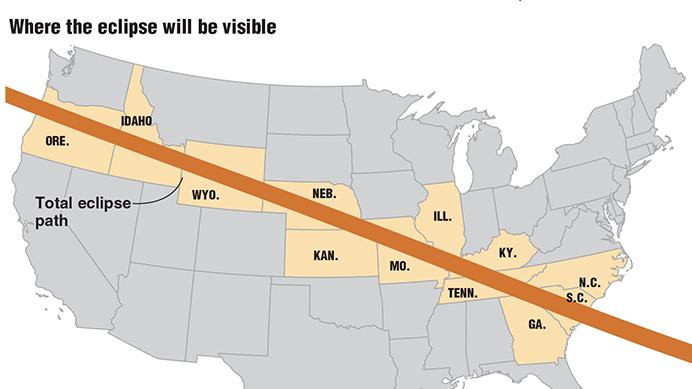Crayons and pencils flew everywhere Sunday as kids at the Iowa City Public Library perfected their solar-eclipse crafts and parents stowed away free eclipse viewing glasses for the event the next day.
A total solar eclipse visible in the Lower 48 U.S. states is a rare event in which the Moon passes between the Sun and the Earth, blocking the sunlight. At its peak, Iowa City will be able to witness the Moon covering about 92 percent of the Sun, according to the University of Iowa Sciences Library.
With a grant from STAR_Net, an organization that provides science-technology activities and resources for libraries, the Public Library was able to hand out 2000 pairs of glasses to families at children’s programming throughout the month of August leading up to the eclipse.
“We want to make sure that every family has access to at least one pair of solar-eclipse glasses,” children’s library assistant Mari Redington said. “Not every family has that access to go out and purchase a pair.”
Families, in addition to receiving glasses, also had the opportunity to create sun thuamaotropes. Pictures of the Sun and the Moon were glued onto opposite sides of a cardboard circle with rubber bands tied to two holes punched in the edges. When twisted and spun, the two pictures seem to combine and become one representing the Sun and the Moon merging in the solar eclipse.
On the day of the eclipse, there will be additional programming including viewing stations on the Pentacrest and at the Sciences Library Courtyard. Beginning at 11:30 a.m. faculty, staff, and student experts will be present to answer questions and provide safe viewing information and equipment, such as solar eclipse glasses and telescopes. In case of overcast weather, the Sciences Library will project the live stream.
“This is an excellent opportunity for the general public to learn more about astronomy,” Dani Lipman, the president of the Society of Physics Students said. “It gives them a chance to be excited about it. It doesn’t have to be just people with telescopes or [people] working in the Physics Department.”
Lipman will be one of the students and faculty on the Pentacrest today to answer questions about the event.
The partial eclipse will start at 11:46 a.m., reach its peak at 1:12 p.m., and end at 2:37 p.m. in Iowa City, according to the Sciences Library. The last solar eclipse seen in the Lower 48 occurred in 1979, but it was only visible in a few Northwestern states.
“There is a line of totality from Oregon to South Carolina where the Moon will completely block out the Sun’s light,” said Cornelia Lang, an associate professor of physics/astronomy. “It’s unusual in this case that in so many metropolitan areas people will witness not just the partial eclipse but the total one.”
Each incoming UI freshman received a complimentary pair of solar-eclipse glasses as a part of the annual On Iowa activities.
Because Iowa City is not in the path of the total eclipse, the UI Hospitals and Clinics emphasized the need for eye protection for the entire eclipse.
Safe ways to view the eclipse include wearing certified solar-eclipse glasses, using certified solar filters for telescopes and camera lenses, watching indirectly online, on a TV, or through a pinhole projector. Watching through regular sunglasses, unfiltered camera, binoculars, or telescope is not enough to protect people’s eyes, according to the American Academy of Ophthalmology.



